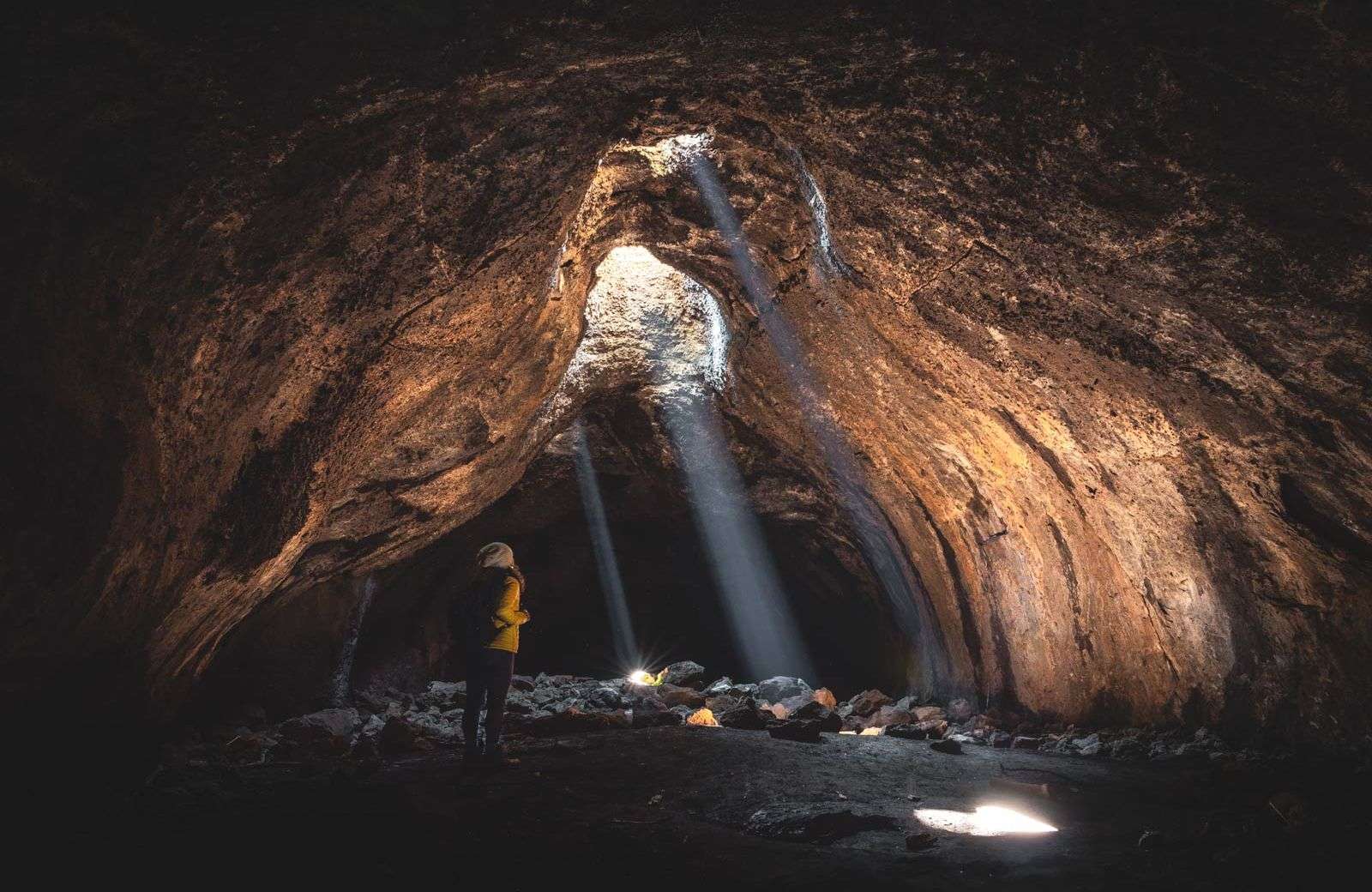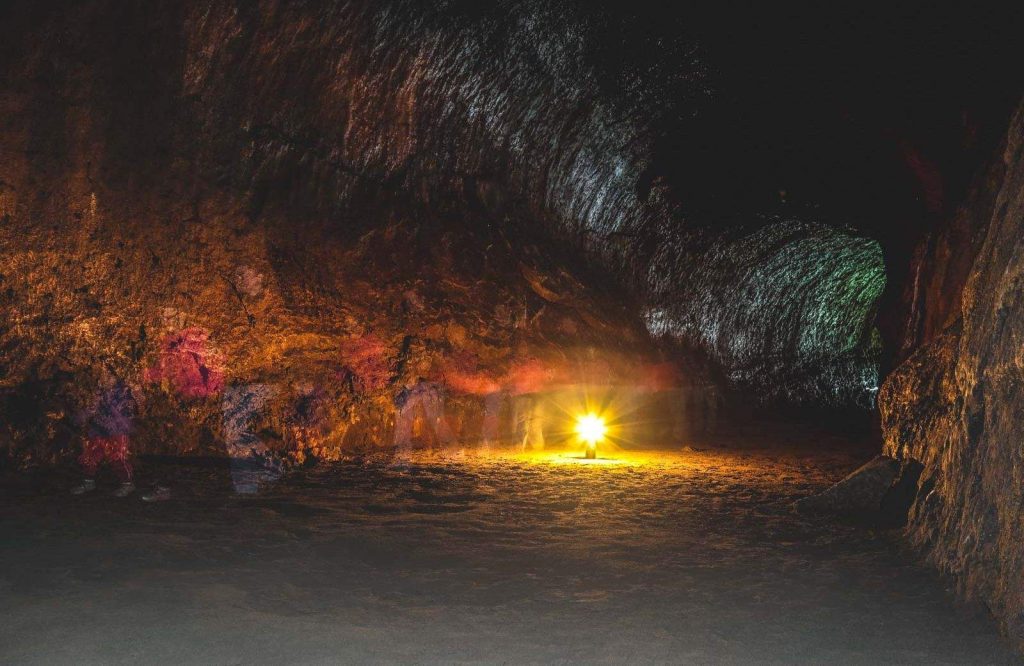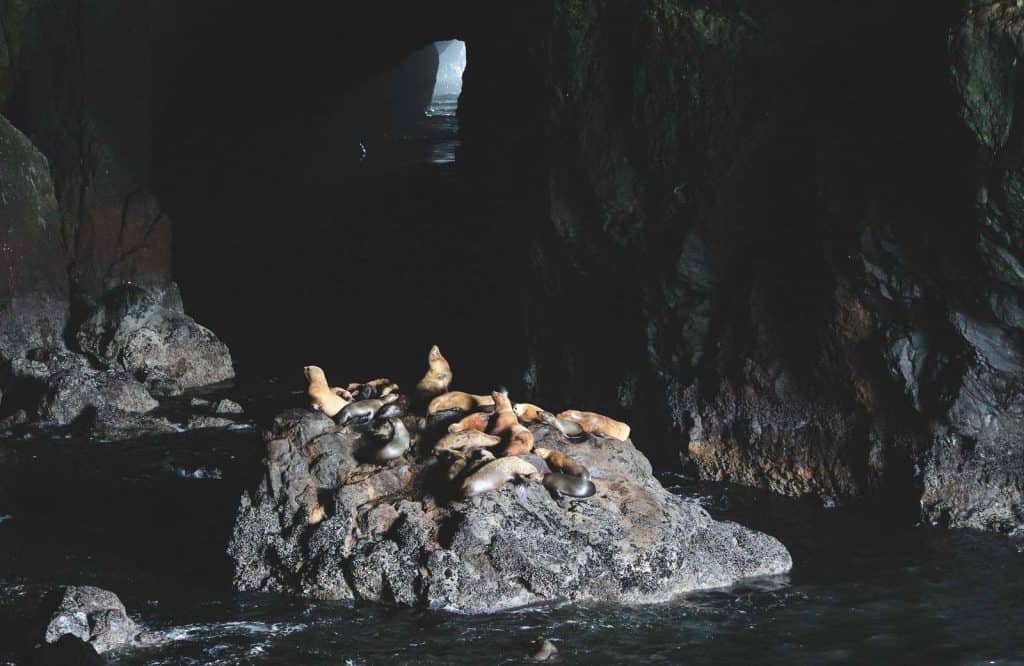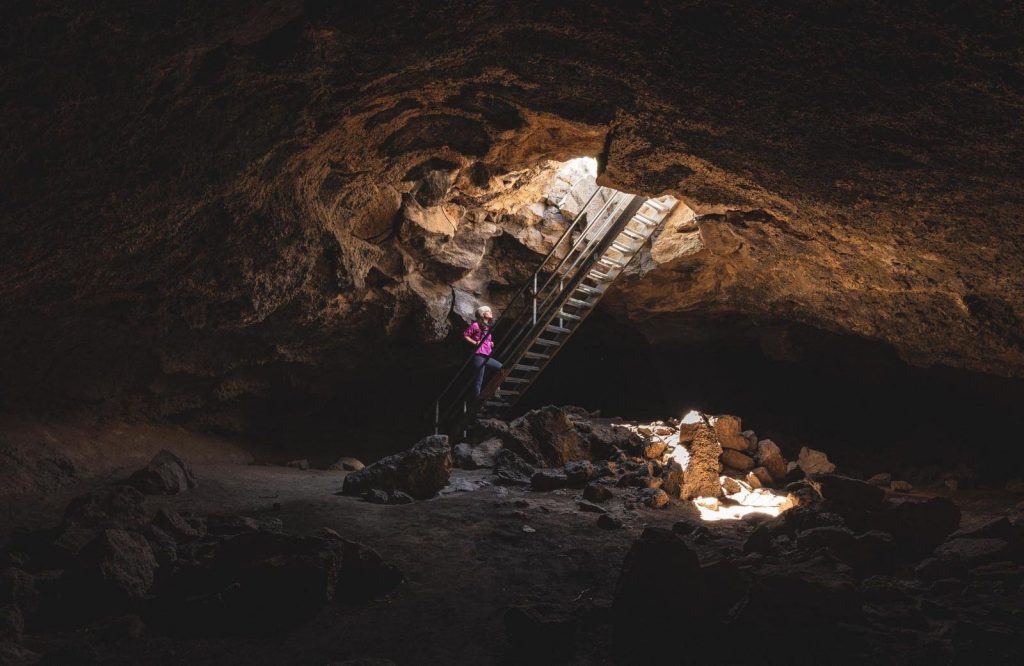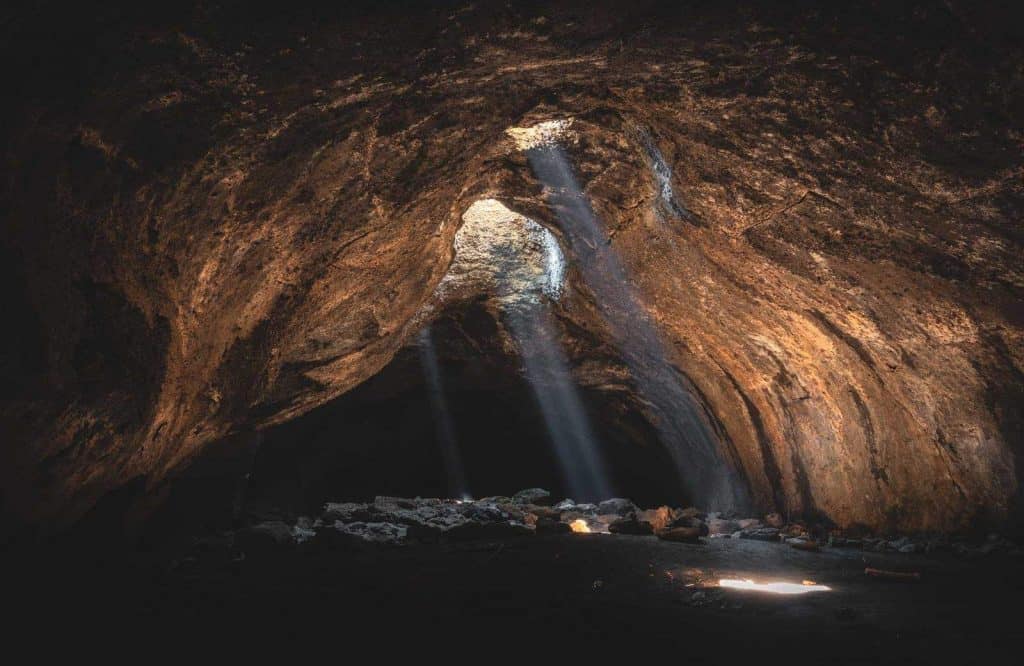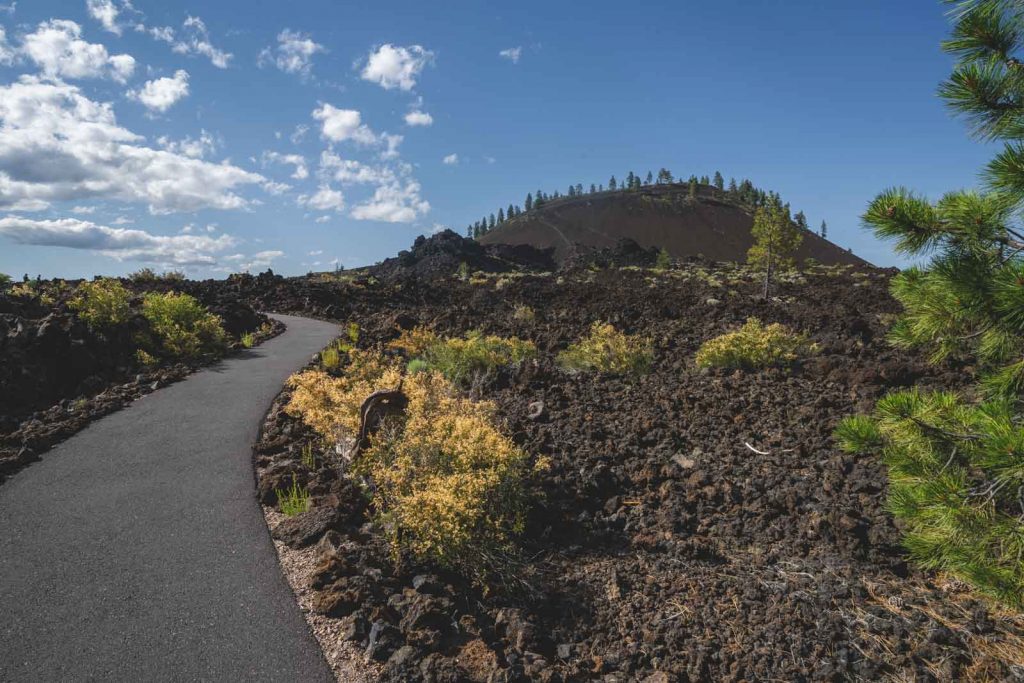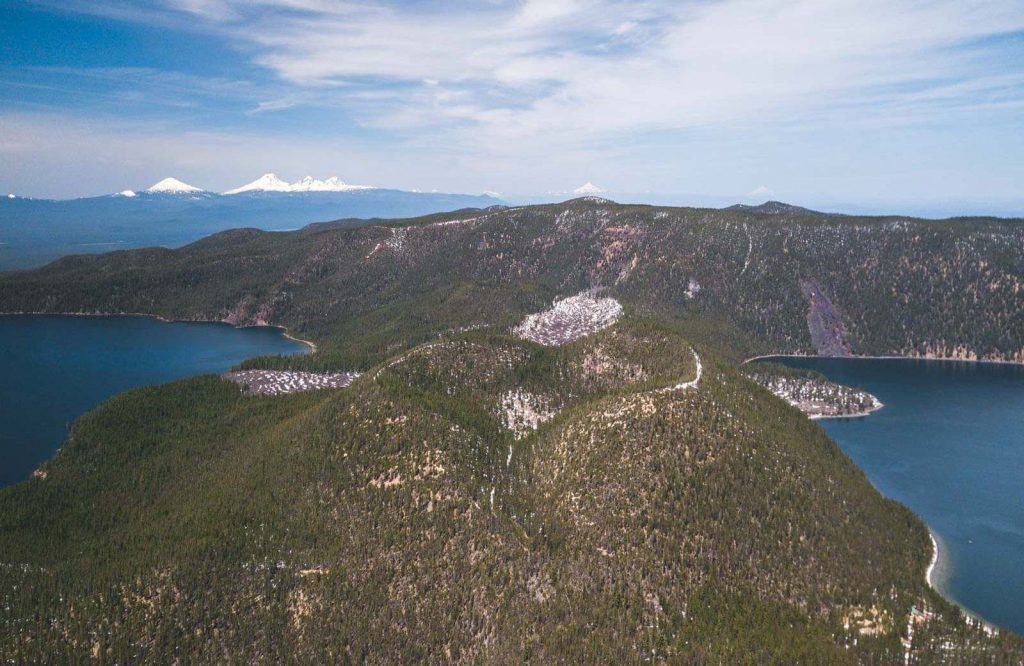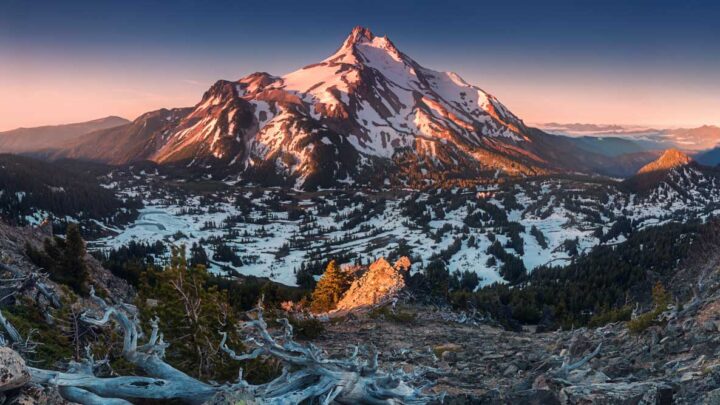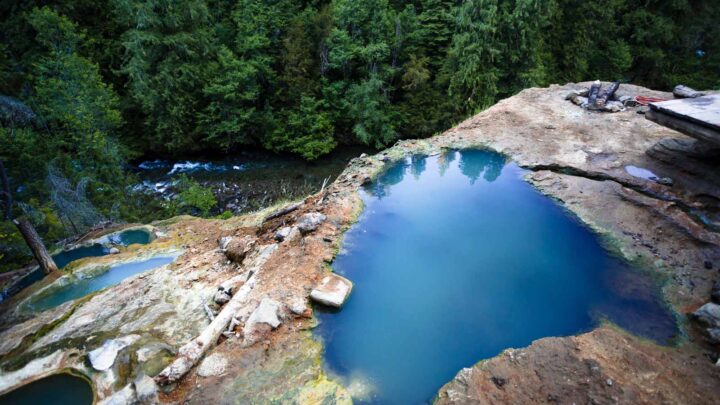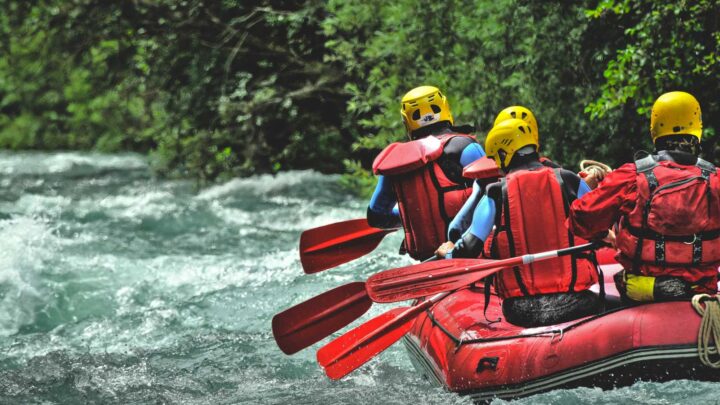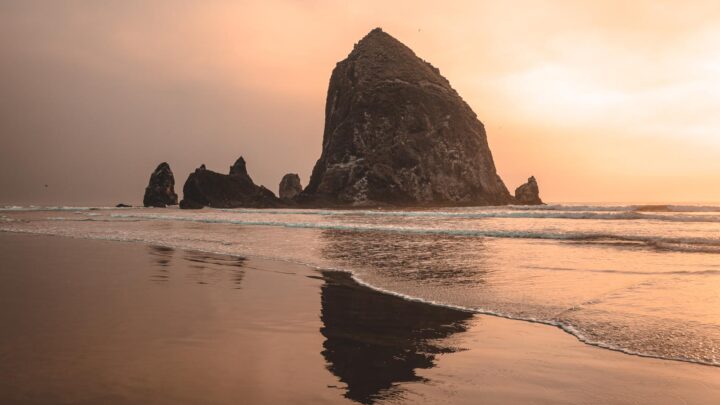Exploring The Coolest Lava Tubes and Caves in Oregon
With its iconic mountains, rivers, and coastline, it’s easy to overlook the adventure of discovering some of Oregon’s underground wonders. Oregon is home to some of the best examples of deep caves and ancient lava beds formed ages ago from the many volcanoes in Oregon’s geological history. So significant that one of them was used by NASA as training grounds for lunar landings.
The two are linked as some of the best caves are, in fact, a lava tube, which is a natural tunnel formed by flowing lava moving underneath the hardened surface of a lava flow. Tubes act as a pressure relief valve of sorts, a natural drainage for the molten rock when an eruption occurs. When cooled, the tube, up to miles in length, is like other naturally forming caves- home to wildlife and even plant life. And the source of many a ghost tale or tales of hideouts and burial grounds.
GET THE ULTIMATE PNW MAP
Get our curated list of the best adventures, things to do, and places to grab a brew loaded onto your maps with just two clicks!


Table of Contents
Our Favorite Caves in Oregon
You might already know that temperature-wise, caves are uniformly cool with little fluctuation in readings. They can be cooler by far and somewhat warmer than the surface above them. When it nears 100 in July, a cave is a great place to be. And if it’s in the teens outside, it is still likely to be in the 40’s in the cave.
Many caves in Oregon, however, are off-limits in the colder months primarily to give aid and comfort to the struggling bat population and to give the caves with their own life cycles time to heal from the annual visitation of adventurers. You don’t have to be a hardcore spelunker (cave explorer) to get awed by caves in Oregon.
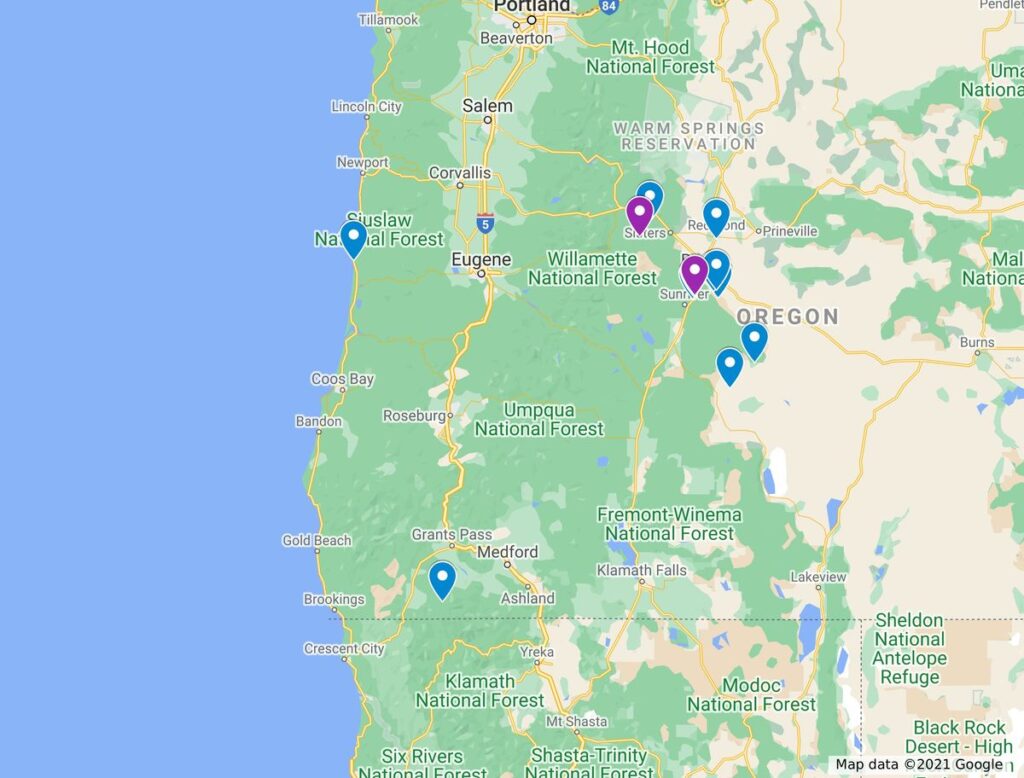
1. Lava River Cave in Oregon
This may be my favorite. It’s a mile long, self-guided lava tube. Around 42 degrees year-round means a jacket or fleece and, to be sure, have two light sources, preferably the standard flashlight and a miner’s or camp lamp or the Forest Service will rent you a lantern.
It’s cold, and the floor is uneven, some of its boardwalk and stairways, the first of which is the 55 stepper that descends into the tube. The first 1,000 feet might still have fallen rocks, even ice patches into June.
The cave is open only from May 1st into September. It’s a highly popular Central Oregon outing. Get there early, maybe 9:30 for the 10:00 opening, or plan a hefty walk from and to your car. The interpretive signage, outside the cave, is exceptional and will give you all you need to know once you are inside if you can remember it.
The cave, a continuous tube, has sections, six in all. Each is distinctly different in feel and texture.
2. Oregon Caves in Cave Junction
At the top of any list would be the namesake Oregon Caves not far from Grants Pass in Josephine County. These caves are significant enough to be a National Monument and Preserve under the management of the National Park Service.
Complete with Rangers who double as tour guides, one will be treated to an underground, geologic feast. Most notable in the dark, pretzel journey would be the Marble Halls, the result of acidic water seeping into marble rock. This is a majestic example of underground formations.
Ceiling heights are as low as 51″ and as many as 120 steps on a rock carved staircase are a modest challenge. In some places, the openings are small and in other cavernous.
For the more serious enthusiast, there’s a plan for you. Trained off-trail cavers offer an intense three-hour experience teaching caving techniques and protocol. Eight people in total get the thrill of scrambling over boulders, belly crawling and fitting into tight spaces as small as 11 inches high by 19 inches wide.
The guided tours typically running from May to October are 60 minutes and two miles in length, and the last of the day is conducted by candle lanterns adding to the mystique. There are no DIY options for this one, and besides, the guides are an encyclopedia of info, usually younger rangers eager to share their knowledge.
READ MORE: Your Ultimate Oregon Road Trip—1 Week to 1 Month Oregon Itinerary
3. Sea Lion Caves Near Florence
There are no tours per se of this privately owned preserve, meaning you do not get into the cave itself, guided or unguided, but that does not lessen the experience. This is, in fact, the largest sea cave in the country formed on two acres of stone floors with a 325-foot headland. The dome is an impressive 125 feet in all plenty of room for some 200 raucous and entertaining rookery.
These are not seals, common on the Oregon coast. These are Steller sea lions with mature males (bulls) as long as 11 feet weighing up to 2,500 pounds. When defending their harem, they make a sound you will remember for life. This is one of the largest natural places on earth for the species which are free to head out to sea and new territory as they wish.
Adult tickets are $14 – Glass separates you from the colony that is generally in residence year-round, inside the cave except in the spring and summer when they move out to their easily viewed “patio,” rocky ledges for breeding and birthing (and putting on a show of nature).
RELATED: 9 Adventurous Things To Do in Florence, Oregon
4. Arnold Ice Cave
Yes, there is ice in the cave, and at times blocking or impeding exploration; however, the ice forms some interesting stalagmites. The icy cave, really a series of 19 connected caves, once produced ice for businesses in Bend and were home to various mining operations evidence of which can still be found.
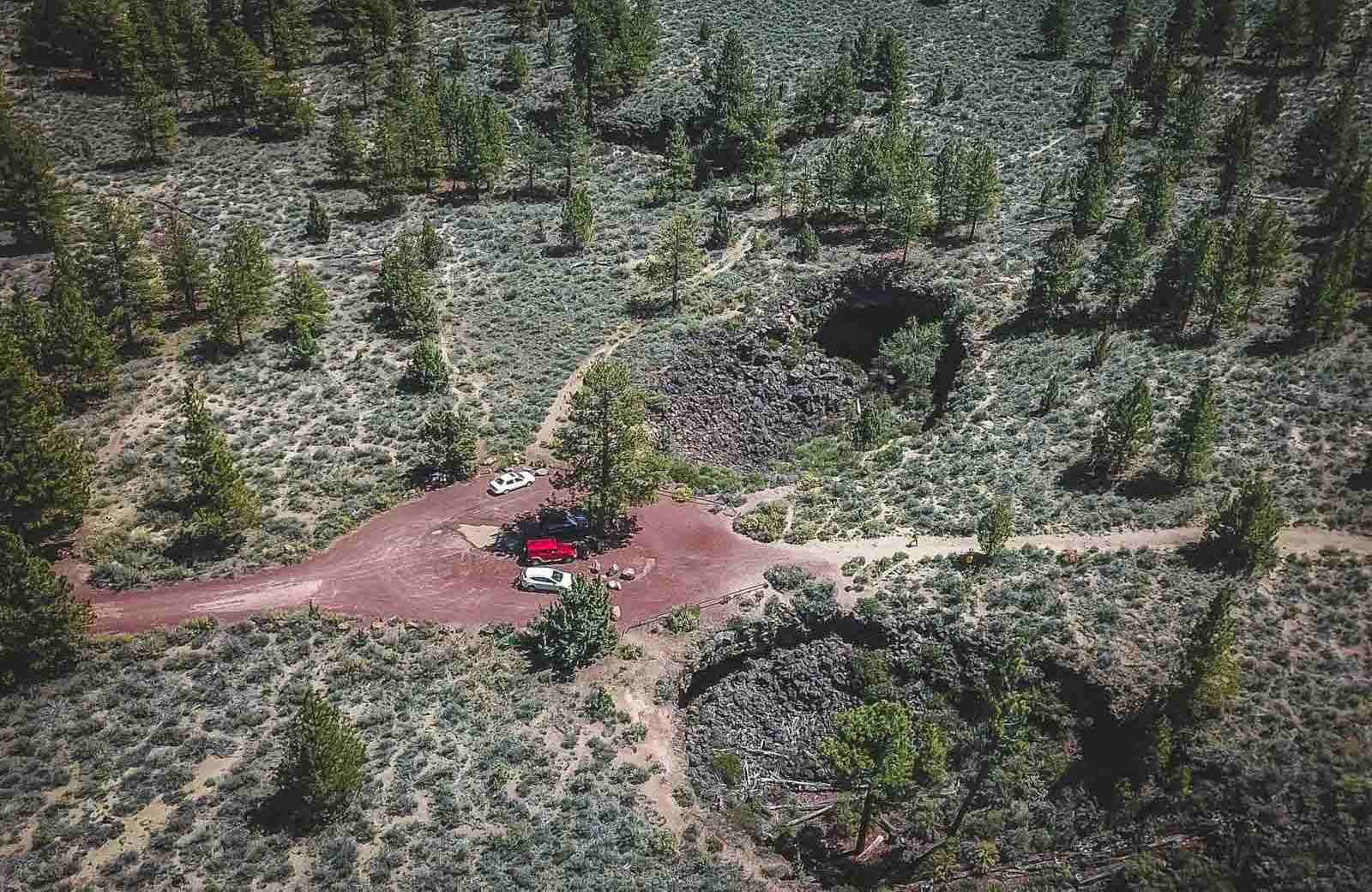
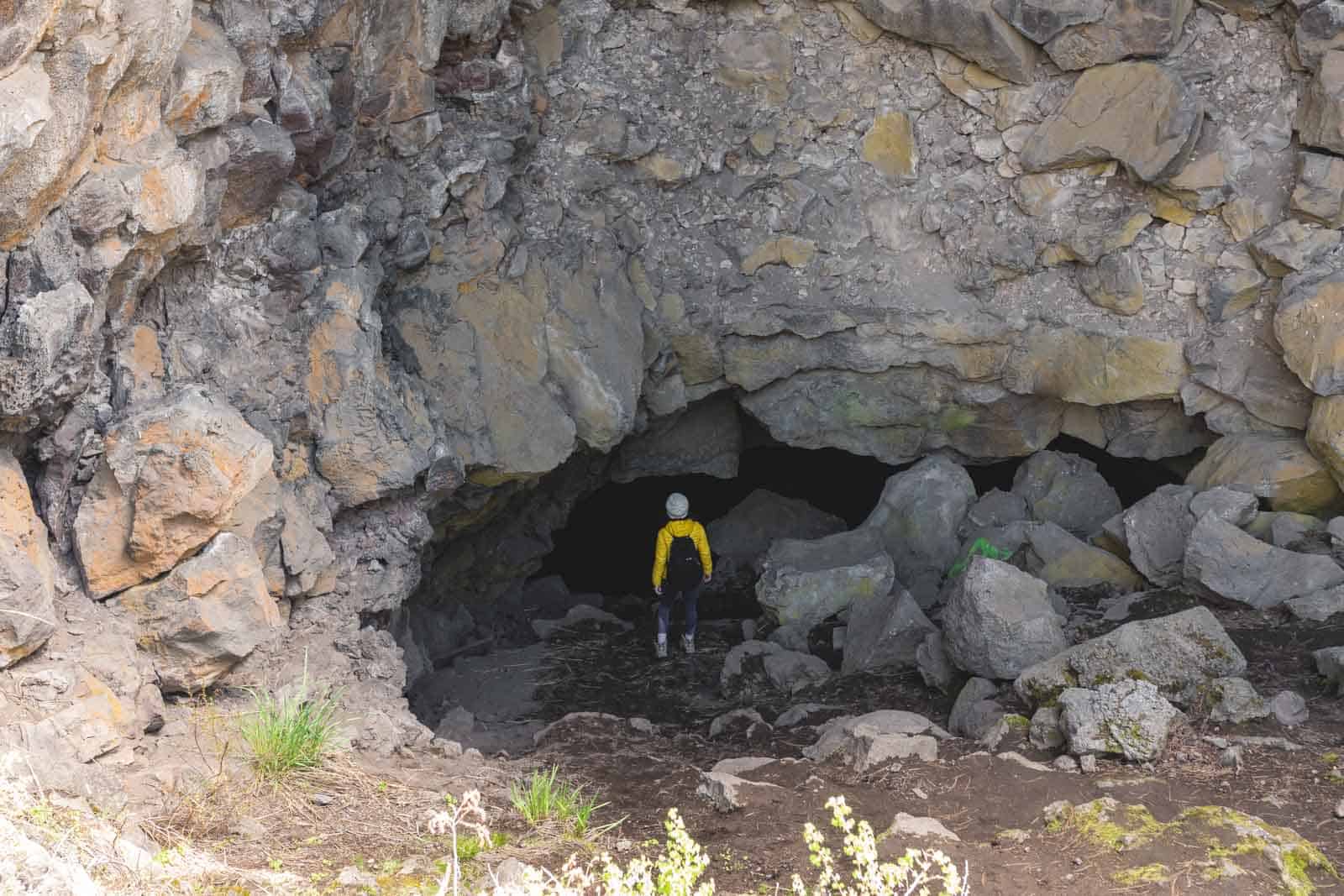
Regrettably, Wind Cave, nearly 4,000 feet in length, is closed in the protection of its important bat population. The caves, lava tubes, to be more precise, are situated on the boundary of Newberry Volcano (see below). The caves are typically open from May to October.
Not to fret. At least seven other caves in the system are accessible, including Pictograph Cave, 1,640 feet long. Plus: Deg, Bat, Charcoal (closed for bat rehabilitation), Dar Hole, and Stookey Ranch Cave. The names alone are symbolic of the caves’ heritage.
BONUS: Hidden Forest Cave
Just behind Arnold Ice Cave is Hidden Forest Cave. While you’re here, it would be silly not to include this magical cave in your adventure. Take the trail behind Arnold Ice Cave, walk for about ten minutes, and you’ll stumble upon another cave that has a… Hidden forest in it!
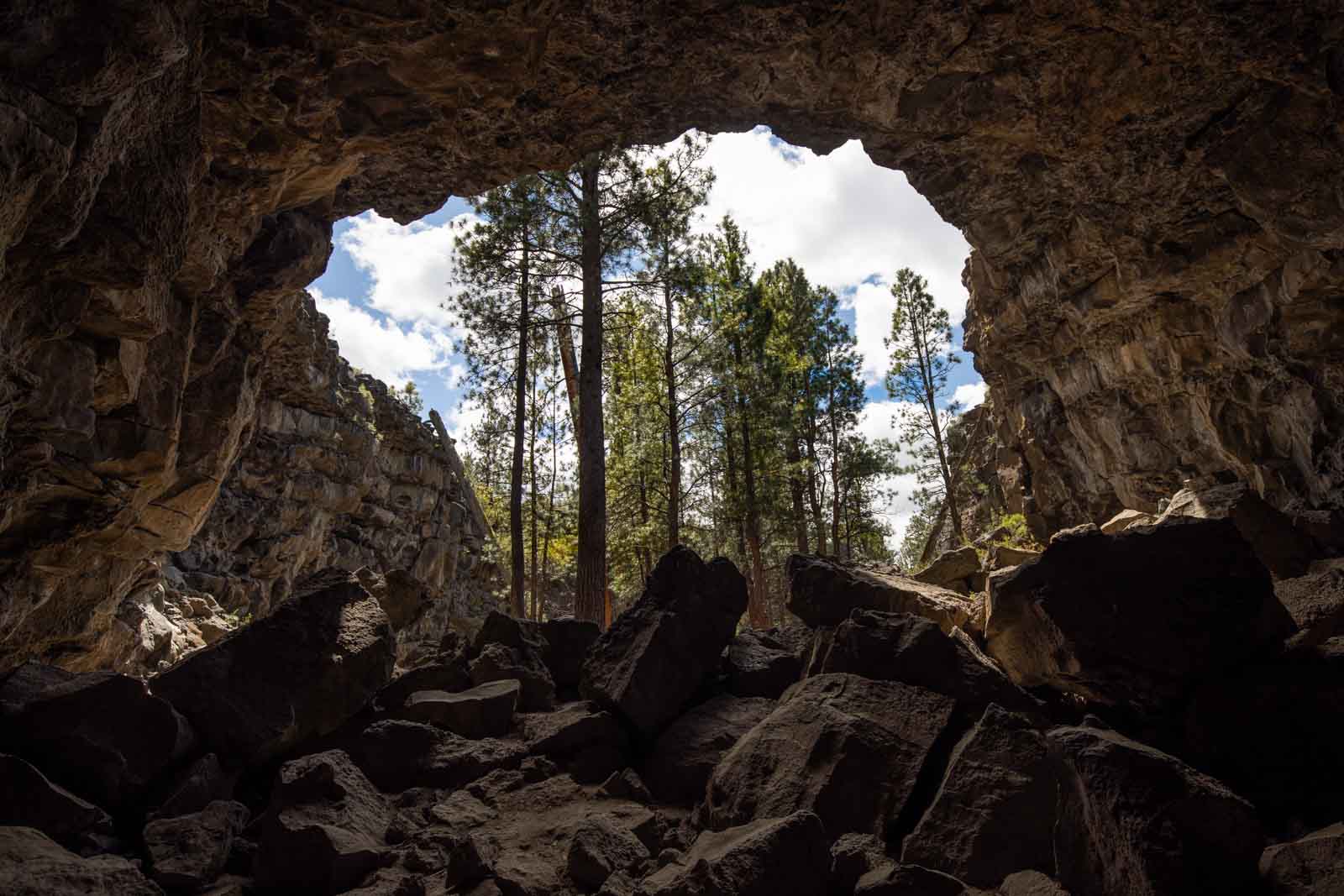

If you find the tiny glimmer of light in the back and climb through the small cave whole, you’ll find it. I’ll leave the rest to you!
5. Boyd and Skeleton Caves
Another 3 miles northwest gets you to Skeleton or Boyd Caves.
Skeleton is only possible via Wanderlust Tours in Bend, who hold the permit for visiting. It’s a 2,900 footer full of enlightenment. Boyd, on the other hand, is permit free and open pretty much year-round.
It is right at 1,800 feet and easy to explore with little collapse over the millennia. A small hole in the ceiling is the access point and down a metal staircase.
6. Redmond Caves
It’s a cluster of 5 caves dating 6,000 years with a long history of use by Native Americans. Being right in the city limits of Redmond and open year-round, they are the most accessible of all our favorite Oregon caves.
Twisting underground trails connect caves 1 and 3. Cave 4 also has a less serpentine trail. Like our other favorites, caves remember that they are dark, without any light source, are cool (often damp) with uneven footing. In the case of Redmond Caves, you might also be sharing with a rattler. The caves are jointly managed by the City of Redmond and BLM. There are no fees to enter and are self-guided.
7. Skylight Cave (A Unique Cave in Oregon!)
This is one of those must-see places. It is very special, even by Oregon standards. Skylight Cave has three openings in the ceiling allowing light to enter the cave. At certain times of the day, primarily early morning and especially the two days before or after the summer solstice, the penetrating light makes ethereal spotlights on the cave floor.
On clear days, the entire color spectrum is possible in cosmic rays of varying widths. The seasonal illumination, deep in the Deschutes National Forest, is not exactly hidden but is not easy to find either.
It’s roughly a 30-minute drive from Sisters, including some 6-7 miles on a non-maintained forest service road. The Cave, a lava tube, is 900 ft. in total length. The marked entry has a metal ladder that descends to the uneven floor. The “skylights” are 300 ft. into the cave. The mist coming off the cool, damp floor, when caught by the light, is an added dimension to the phenomena.
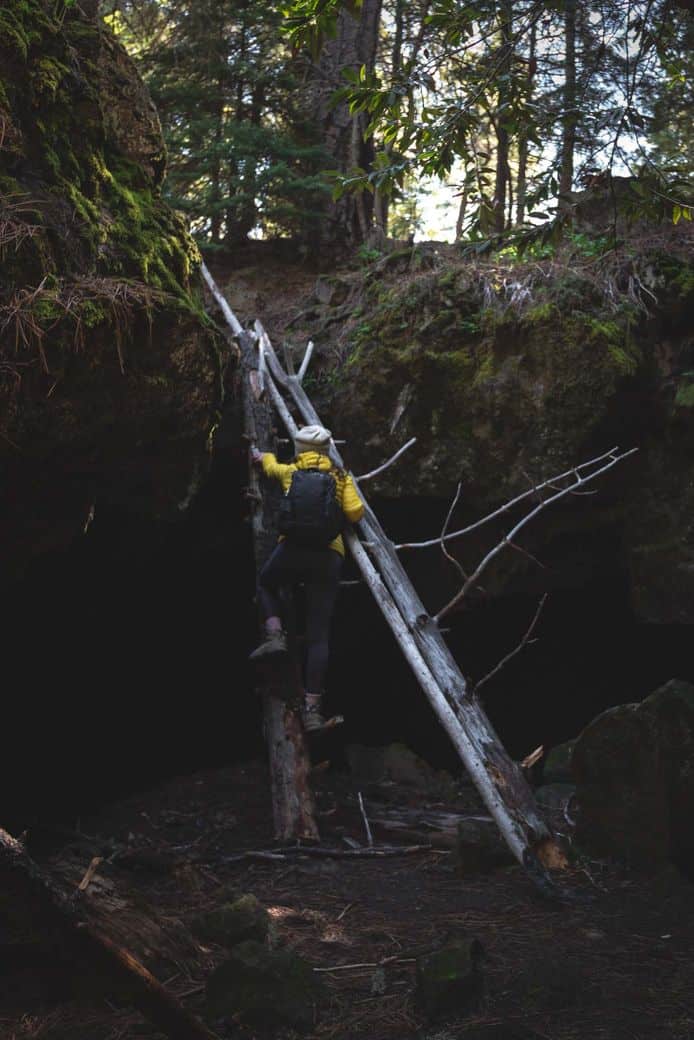
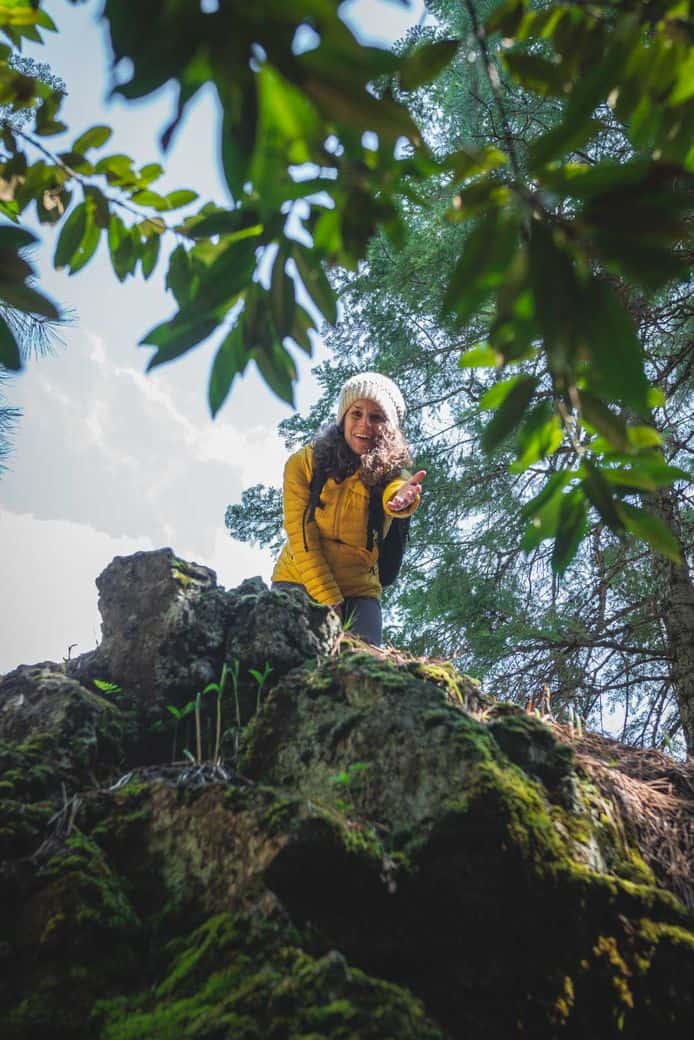
Skylight can only be accessed May through September, closing in October through April to protect the bat population who hibernate and mate here.
RELATED: How to Get to Skylight Cave in Oregon
8. Fort Rock and Derrick Caves
If you haven’t been to Fort Rock, well saddle up and get on over to this Oregon gem. The ‘rock’ itself is mighty impressive as is the well preserved historic town. The cave at Fort Rock is a Natural Heritage site. Artifacts at least 9-11,000 years old have been found here. The cave’s cultural significance, especially among Native Americans, allow visiting only with $10 tours in the summer led by State guides. Advance reservations are required.
Make a day of it when exploring Fort Rock and head northeast a bit to this 1,200-foot cave and lava tube. Its 30-foot ceiling and 50-foot width are spacious are some respects. Unlike the majority of Oregon caves we are highlighting, this one has a good amount of natural skylights and is multi-level. The cave, on BLM land, is remote with no facilities or water and a rough road getting there. Still, it’s a definite on our list.
READ MORE: 37+ Adventurous Things to Do in Oregon—Your Go-To List!
Best Lava Sites in Oregon
9. Lava Lands in Bend
Seven thousand years ago, a volcanic explosion left a swath of lava debris miles wide and long. The jagged rocks, some razor-sharp, so resembled the moonscape that NASA astronauts trained here.
Just a few miles from Bend and Sunriver, Lava Lands is one of Central Oregon’s most popular destinations. The Visitor Center is full of all things lava for not just Lava Butte but the entire 54,000 acres Newberry National Volcanic Monument.
A 1-mile hike on the Trail of Molten Land and the Trail of Whispering Pines is an interpretive-rich experience. Walk to the top of the Butte for a higher level experience (or take the shuttle in the summer). But for the full buffet, bike the 5.5-mile trail from Sunriver.
10. Newberry National Volcanic Monument
Called Newberry Crater by many, it is, in fact, a caldera. A 17 square mile caldera to be precise, right through the heart of the still (mildly) active volcano. The volcano itself is the size of Rhode Island! If it’s lava, it’s here in all its splendor. Some 400 cinder cones and vents as well as miles of obsidian and basalt flows.
From 7,985 ft. Paulina Peak visitors are treated to a vast array of lakes, sweeping views of 10,000 ft. Plus Cascade Peaks, high desert and endless flows from the millennia-old eruption. Plan on an entire day at Newberry.
No fewer than 40 trails are available for hiking and biking in the Newberry National Volcanic Monument, including Paulina Falls, Obsidian Flow Trail, and Newberry Crater Trail. The Peter Skene Ogden National Recreation Trail basically follows Paulina Creek to the Lake. Much of the Monument is nirvana for mountain bikers. Rock hounds, of course, think they are in paradise.
READ MORE: Your Guide to Newberry National Volcanic Monument
11. Wilderness Lava Fields
Twenty miles west of Sisters is the Wilderness Lava Fields, another stunning lava field with 65 square miles of superb lava formations. NASA also trained here in 1964 as it so closely resembled the lunar surface as it was perceived then.
The focal point is the Dee Wright Observatory perched a mile high on a stellar lava flow. From this 360º vantage point are some of the best possible views of the Mount Washington and Three Sisters Wilderness areas. It is an exceptional spot for viewing Collier Glacier, the largest in Oregon.
OR 242 is generally open from mid-May to mid-November due to heavy snows. When the snows are melted, the lava reveals infrequent, gnarly trees and a host of small critters who survive the harsh landscape.
Before Going Out to The Caves in Oregon
- Bring two light sources in case one fails while you’re in the cave. A headlamp is best so your hands are available.
- Only wear closed-toed shoes, toes will otherwise be stubbed!
- Download maps. Almost all these caves in Oregon are in places where little to no service is available.
- Bring some food and water, most areas offer limited services.
- You may need a Northwest Forest Pass or $5 for parking for some of these caves.
Whether underground in caves or tubes or high above it in fields or beds, lava is a whole new way to think of Oregon adventure!
More of Our Favorite Places in Oregon
I hope you found some awesome Oregon caves to add to your list! Be sure to check out our other posts about the best things to do in Oregon and other adventures around Oregon.

